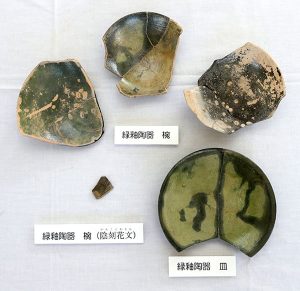Archaeologists unearthed remains of a large ninth-century mansion likely belonging to a high-ranking nobleman within the site of Heiankyo (or Heian-kyō), the ancient capital founded in 794 AD in present-day Kyoto, Japan.

The mansion measures 21 by 9 metres and is one of the largest structures ever excavated within the site. The remnants of the mansion and three other buildings were newly discovered in a 120-meter-square site, which has been confirmed as one large piece of residential land, in the Kyoto’s Nakagyo Ward. The building was built with wooden columns directly installed into holes in the ground.It is believed to have been constructed in the early ninth century, or the first half of the Heian Period (794-1185 AD). the researchers assume it was the private residence of a nobleman who had a rank of “sanmi” or above, today’s equivalent of a Cabinet minister. Among the artefacts excavated at the site is a large number of pieces of green-glazed and ash-glazed pottery, which were expensive commodities at the time. According to experts high-quality green-glazed pottery pieces have been found most noticeably at sites related to the Emperor Saga (786-842 AD), which may point to the period of the house’s occupation.

(after Asahi Shimbun & Yoshiko Sato)